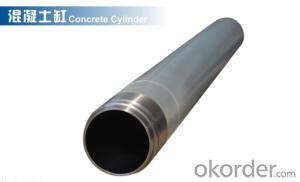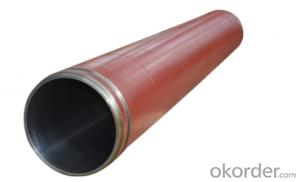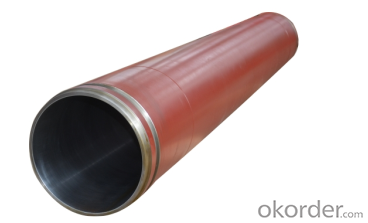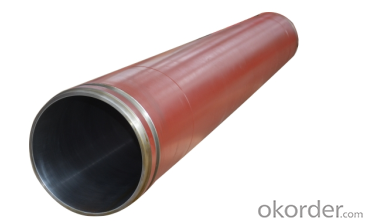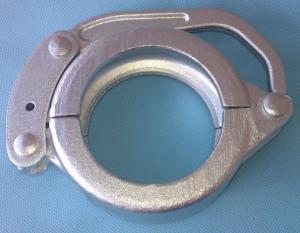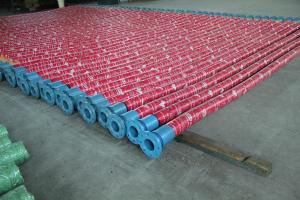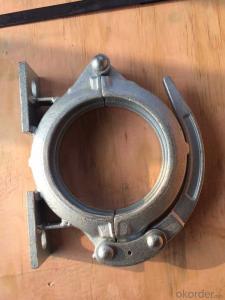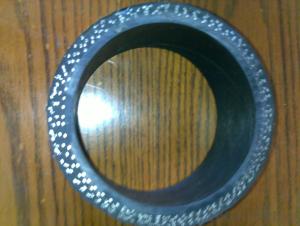DELIVERY CYLINDER(SCHWING ) I.D.:DN250CR. THICKNESS :0.25MM-0.3MM LENGTH:2325MM
- Loading Port:
- Shanghai
- Payment Terms:
- TT OR LC
- Min Order Qty:
- 2 pc
- Supply Capability:
- 1000 pc/month
OKorder Service Pledge
Quality Product, Order Online Tracking, Timely Delivery
OKorder Financial Service
Credit Rating, Credit Services, Credit Purchasing
You Might Also Like
Packaging & Delivery
| Packaging Detail: | wooden case, seaworthy packing |
| Delivery Detail: | 15 days |
Specifications
Concrete Pump Delivery Cylinder DN230*2100
1. Capacity: 60,000~80,000cbm
2. Size: DN180, DN200, DN230..
4. Brand: PM, Sany,ZM
Concrete Pump Delivery Cylinder DN230*2100
1. Material: C45
2. quenching and tempering to improve the hardness to HB241-280
3. inner wall chrome thickness is 0.25-0.30mm, hardness HV820-900.
4. Brand: SCHWING, PM, SANY, KYOKUTO, CIFA
5. Capacity: 60,000~80,000cbm

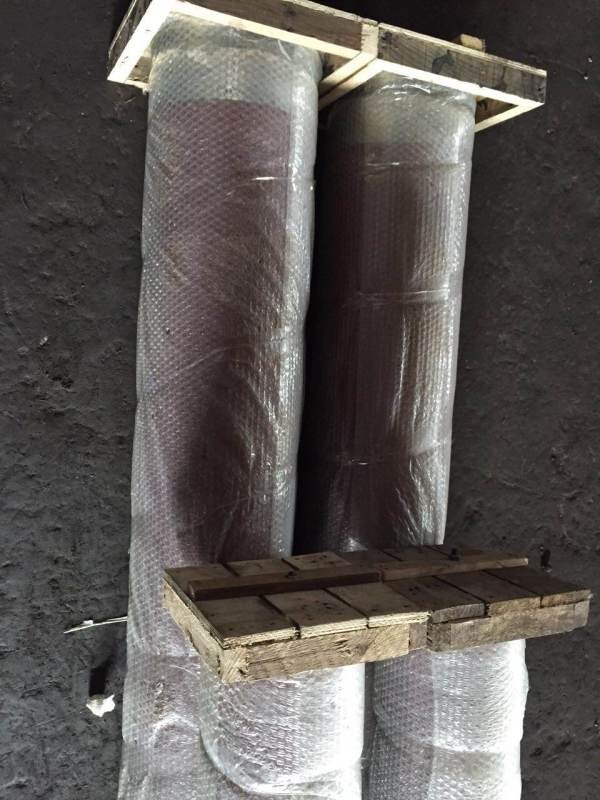
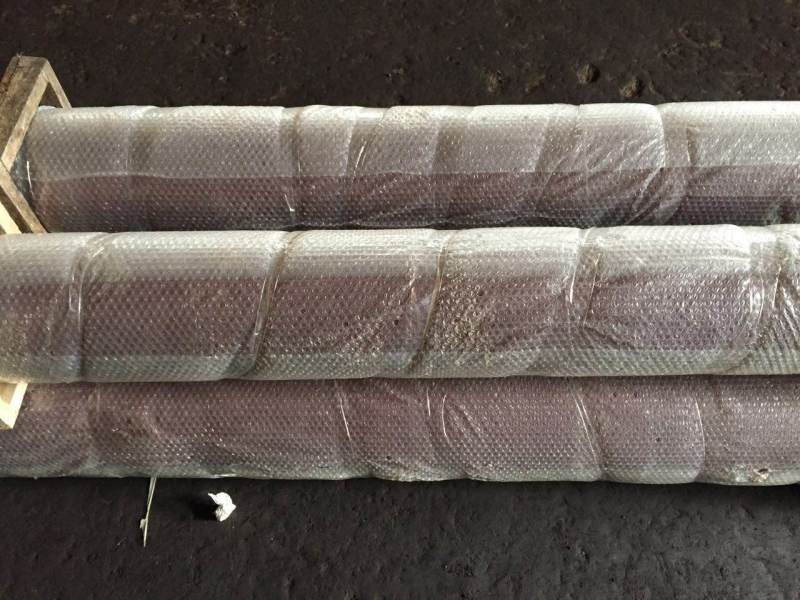
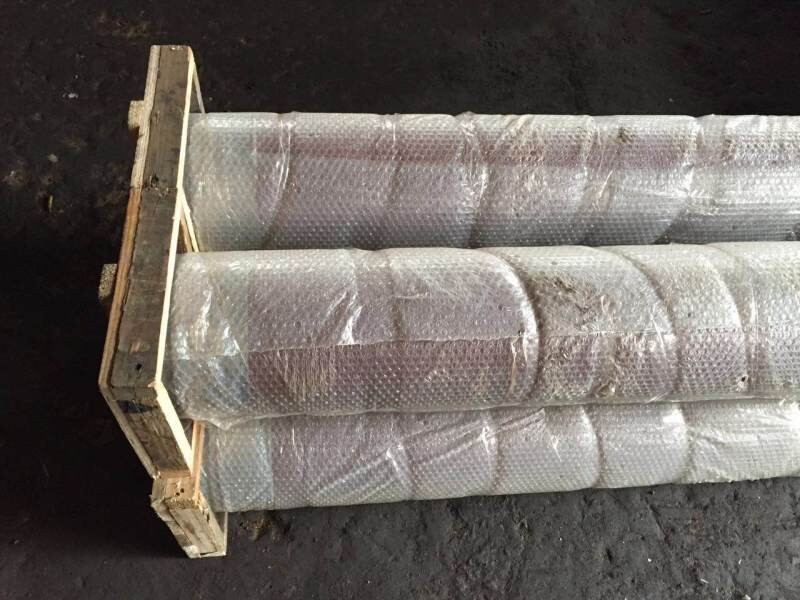

- Q: How often should hopper grate clamps be inspected or replaced in a concrete pump?
- Hopper grate clamps in a concrete pump should be inspected regularly, ideally every 500 hours of operation, or at least once every six months. However, the frequency of inspection and replacement may vary depending on the specific conditions and usage of the concrete pump. It is important to closely monitor the condition of the clamps and replace them promptly if any signs of wear, damage, or loosening are observed to ensure optimal performance and safety.
- Q: How can one ensure proper functioning of concrete pump spare parts after installation?
- To ensure proper functioning of concrete pump spare parts after installation, it is important to follow a few key steps. Firstly, it is crucial to carefully inspect and clean the parts before installation to ensure they are free from any debris or damage. Additionally, it is essential to use high-quality parts from reputable manufacturers to ensure durability and reliability. Regular maintenance and lubrication of the spare parts is also necessary to prevent wear and tear. Lastly, it is important to operate the concrete pump within its specified limits and avoid overloading, as this can cause stress on the spare parts and lead to malfunctioning.
- Q: How do I properly maintain and replace hydraulic hoses in concrete pump spare parts?
- Proper maintenance and replacement of hydraulic hoses in concrete pump spare parts involve a few essential steps. Firstly, it is crucial to regularly inspect the hoses for signs of wear, including cracks, leaks, or bulges. Any damaged hoses should be replaced immediately to avoid any potential accidents or disruptions in the pumping process. When replacing hydraulic hoses, it is essential to use high-quality hoses that are compatible with the concrete pump system. It is recommended to consult the manufacturer's guidelines or seek professional advice to ensure the correct specifications and fittings are used. During installation, make sure to properly clean and prepare the hose fittings and connections. This involves removing any debris or dirt that could cause contamination or hinder a secure connection. Additionally, it is essential to follow the recommended torque specifications when tightening the fittings to prevent over-tightening or under-tightening, which can lead to leaks or hose failure. Regular maintenance also includes regularly checking and replacing hydraulic oil and filters according to the manufacturer's recommendations. This helps to ensure optimal performance and prolong the lifespan of the hydraulic hoses and other components. Overall, proper maintenance and replacement of hydraulic hoses in concrete pump spare parts require regular inspections, the use of high-quality hoses, proper cleaning and preparation during installation, correct torque specifications, and adherence to manufacturer guidelines for maintenance and replacement intervals.
- Q: What are the indicators of a faulty concrete pump seal?
- There are multiple signs that may suggest a defective concrete pump seal. These signs include: 1. Leakage: One of the most evident indications of a faulty seal is when concrete or water leaks around the seal area. If you observe any fluid seeping out from the seal, it is a clear sign of a problem. 2. Decreased pumping efficiency: A faulty seal can lead to reduced pumping efficiency. If you notice that the concrete pump is not delivering the expected amount of concrete or is struggling to pump the material, it could be due to a seal issue. 3. Increased noise and vibration: The operation of a concrete pump may experience heightened noise and vibration due to a defective seal. Unusual sounds or excessive vibration can indicate that the seal is not functioning properly, and further inspection may be necessary. 4. Premature wearing and tearing: A defective seal can cause premature wear and tear on other components within the pump system. This can be observed through the deterioration of other parts like gaskets, bearings, or pistons. Regular inspections can help identify such problems. 5. Inconsistent pressure: A faulty seal may result in inconsistent pressure while pumping concrete. If you notice pressure variations or irregular concrete flow, it may be a sign of a seal problem. 6. Excessive heat: Another indicator of a defective seal is the generation of excessive heat in the seal area. If the seal is not functioning properly, it can cause friction and heat buildup, which can be felt or observed by touch. Addressing any sign of a defective concrete pump seal promptly is crucial to prevent further damage to the pump system and ensure the operation's safety and efficiency. It is recommended to seek guidance and repair from a professional or contact the manufacturer in such cases.
- Q: How often should hopper cylinders be inspected or replaced in a concrete pump?
- Hopper cylinders in a concrete pump should be inspected regularly to ensure optimal performance and prevent potential malfunctions. The frequency of inspections and replacements depends on several factors, including the intensity of usage, the type of concrete being pumped, and the overall condition of the equipment. As a general guideline, it is recommended to inspect hopper cylinders at least on a monthly basis or after every 100 hours of operation, whichever comes first. During these inspections, the cylinders should be thoroughly examined for any signs of wear, corrosion, or damage. Additionally, the seals, gaskets, and other components connected to the cylinders should be checked for proper functioning. However, it is important to note that the inspection frequency may need to be increased if the concrete being pumped contains abrasive materials or if the pump is being used in harsh environmental conditions. In such cases, more frequent inspections and replacements may be necessary to avoid unexpected breakdowns and costly repairs. Ultimately, the goal is to maintain the hopper cylinders in good condition and address any issues promptly. Regular inspections, along with routine maintenance and proper cleaning, can significantly prolong the lifespan of the cylinders and ensure the concrete pump operates efficiently and safely.
- Q: Can I get spare parts for both concrete pumps with and without boom control systems?
- Yes, you can get spare parts for both concrete pumps with and without boom control systems.
- Q: How do I properly maintain and replace hydraulic valves in concrete pump spare parts?
- Proper maintenance and replacement of hydraulic valves in concrete pump spare parts involve a few key steps. Firstly, it is crucial to regularly inspect the valves for any signs of wear, damage, or leakage. This can be done by checking the valve body, seals, and connections. Secondly, ensure that the valves are lubricated according to the manufacturer's recommendations to prevent friction and extend their lifespan. Additionally, it is essential to adhere to the specified pressure and temperature limits during operation, as exceeding these limits can lead to valve failure. When it comes to replacement, it is recommended to consult the equipment manual or seek professional assistance to ensure that the correct valves are selected and installed accurately. Regular maintenance and timely replacement of hydraulic valves will ensure the optimal performance and longevity of the concrete pump spare parts.
- Q: How often should hopper grate springs be inspected or replaced in a concrete pump?
- Hopper grate springs in a concrete pump should be inspected regularly to ensure optimal performance and prevent any potential issues. The frequency of inspection or replacement depends on several factors such as the pump's usage, operating conditions, and the manufacturer's recommendations. However, a general guideline is to inspect the hopper grate springs at least once every six months or after every 500 hours of operation, whichever comes first. During the inspection, it is important to thoroughly examine the springs for any signs of wear, damage, or deformation. Look for cracks, excessive rust, or loss of tension in the springs. If any of these issues are detected, immediate replacement is necessary to maintain the proper functioning of the hopper grate system. Regular inspection and timely replacement of hopper grate springs are crucial to prevent clogging or blockage in the hopper, which could lead to pump malfunctions or downtime. It is advisable to consult the concrete pump manufacturer's guidelines or seek assistance from a professional technician to determine the specific inspection and replacement intervals based on the pump's make and model.
- Q: How do I maintain the performance of concrete pump spare parts in extreme weather conditions?
- Maintaining the performance of concrete pump spare parts in extreme weather conditions is crucial to ensure the efficiency and longevity of your equipment. Here are some tips to help you maintain the performance of concrete pump spare parts in extreme weather conditions: 1. Regular inspection: Conduct regular inspections of your concrete pump spare parts to identify any signs of wear and tear. Extreme weather conditions can accelerate the deterioration of parts, so it is important to catch any potential issues early on. 2. Keep parts clean: Extreme weather conditions such as rain, snow, or excessive heat can lead to the accumulation of dirt, debris, or other contaminants on your spare parts. It is essential to clean the parts regularly to prevent any clogging or damage. 3. Proper lubrication: Lubrication is crucial for the smooth functioning of concrete pump spare parts. In extreme weather conditions, it is recommended to use lubricants specifically designed for such conditions. These lubricants should have high viscosity and resistance to temperature fluctuations. 4. Protect from direct exposure: Extreme weather conditions, such as extreme heat or freezing temperatures, can directly impact the performance of concrete pump spare parts. It is essential to protect the parts from direct exposure to these conditions by utilizing covers or enclosures. 5. Store spare parts correctly: When not in use, spare parts should be stored in a dry and temperature-controlled environment. Extreme weather conditions can cause parts to expand or contract, leading to potential damage. Storing spare parts in a controlled environment will help maintain their integrity and performance. 6. Timely replacement: Constant monitoring and timely replacement of worn-out parts are crucial to maintaining the performance of concrete pump spare parts. Extreme weather conditions can accelerate the wear and tear process, so it is important to have a proactive approach towards replacement. 7. Consult the manufacturer: If you are unsure about the specific requirements for maintaining concrete pump spare parts in extreme weather conditions, it is always best to consult the manufacturer. They can provide you with expert advice and guidance on how to ensure optimal performance in such conditions. By following these tips, you can effectively maintain the performance of concrete pump spare parts in extreme weather conditions, ensuring the smooth and efficient operation of your equipment.
- Q: Are there any specific safety precautions for handling concrete pump spare parts?
- Yes, there are specific safety precautions for handling concrete pump spare parts. It is important to wear appropriate personal protective equipment, such as gloves and safety glasses, to prevent injuries. Additionally, one should ensure that the work area is clean and well-organized to avoid accidents. Proper training and knowledge of the equipment and its parts is also crucial to handle them safely. Regular inspections and maintenance of the spare parts should be conducted to identify any potential hazards and prevent accidents.
Send your message to us
DELIVERY CYLINDER(SCHWING ) I.D.:DN250CR. THICKNESS :0.25MM-0.3MM LENGTH:2325MM
- Loading Port:
- Shanghai
- Payment Terms:
- TT OR LC
- Min Order Qty:
- 2 pc
- Supply Capability:
- 1000 pc/month
OKorder Service Pledge
Quality Product, Order Online Tracking, Timely Delivery
OKorder Financial Service
Credit Rating, Credit Services, Credit Purchasing
Similar products
Hot products
Hot Searches
Related keywords

